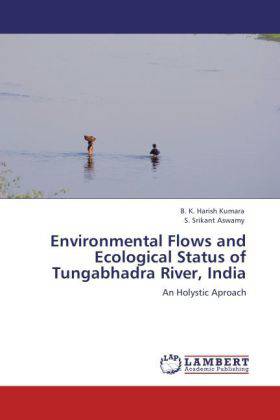
- Afhalen na 1 uur in een winkel met voorraad
- Gratis thuislevering in België vanaf € 30
- Ruim aanbod met 7 miljoen producten
- Afhalen na 1 uur in een winkel met voorraad
- Gratis thuislevering in België vanaf € 30
- Ruim aanbod met 7 miljoen producten
Zoeken
Environmental Flows and Ecological Status of Tungabhadra River, India
An Holystic Aproach
B K Harish Kumara, S Srikant Aswamy
Paperback | Engels
€ 77,95
+ 155 punten
Omschrijving
This book aims to evaluate Environmental flows and ecological status in Tungabhadra River. The study clearly indicated that the flow varied over the years. During the monsoon season it flowed at a moderate level, while it recorded nil flow through the lean months. The water utilization from the dam was high. Agricultural and industrial water demand has increased the stress on the water resources of the river basin. The immediate impact of flow regime change was observed in the vicinity of the river in the study area, where farmers observed that their consumption of inorganic fertilizers has increased and their fields were getting enriched by the silt. Several incidents had occurred in the basin due to less flow. The present study provides simple representation of complex of variables (physical, biological and chemical) that govern the overall quality of sur¬face water that are intended for potable use. The fisheries in Tungabhadra River support the livelihoods of a significant proportion of the population. In the river basin, upper catchment of the basin exhibited moderately good riparian vegetation, which gradually declined towards the downstream of Tungabhadra dam.
Specificaties
Betrokkenen
- Auteur(s):
- Uitgeverij:
Inhoud
- Aantal bladzijden:
- 316
- Taal:
- Engels
Eigenschappen
- Productcode (EAN):
- 9783845420998
- Verschijningsdatum:
- 6/01/2012
- Uitvoering:
- Paperback
- Formaat:
- Trade paperback (VS)
- Afmetingen:
- 152 mm x 229 mm
- Gewicht:
- 462 g

Alleen bij Standaard Boekhandel
+ 155 punten op je klantenkaart van Standaard Boekhandel
Beoordelingen
We publiceren alleen reviews die voldoen aan de voorwaarden voor reviews. Bekijk onze voorwaarden voor reviews.











